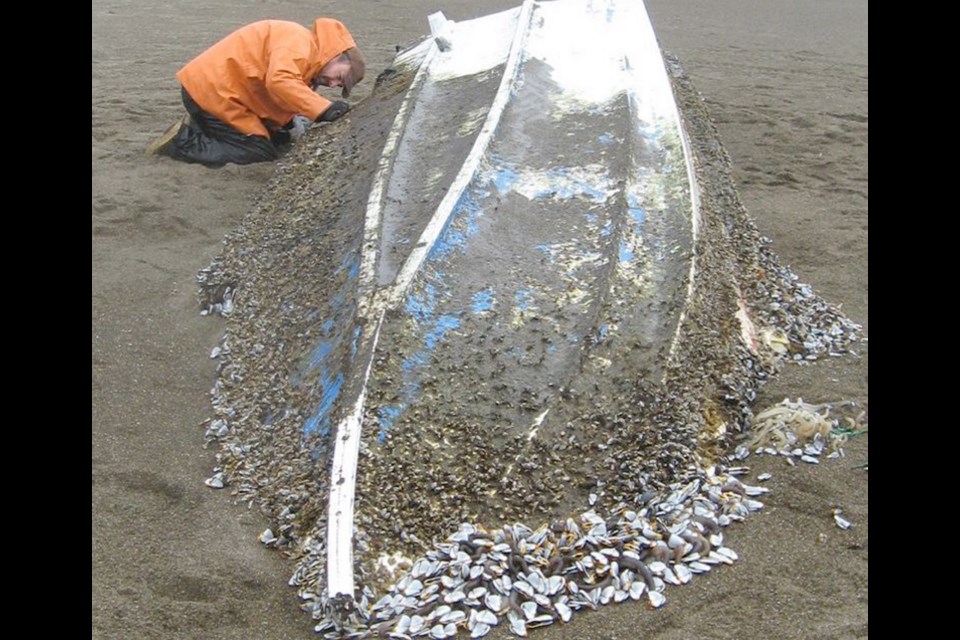Invasive species are hitchhiking to the west coast of North America on debris from the March 2011 Japanese tsunami and it could be years before it is known which species will take hold and how much damage they will do, Oregon State University scientists say.
But there is a major gap in the research because no samples have been sent from B.C. and there does not appear to be equivalent research data from Canada, said John Chapman, a marine invasive species specialist from Oregon State’s Hatfield Marine Science Center.
Chapman, who has studied more than three dozen pieces of tsunami debris from Alaska, Oregon and Washington, said several species have the potential to cause widespread ecosystem and economic damage.
Examples include wakame kelp, which can spread quickly, fouling docks and blocking sunlight from native kelp and seaweeds; sea squirt tunicate, which can foul aquaculture lines, and a parasite that can kill oysters, said Chapman, one of the first scientists to examine a massive dock that washed ashore last year in Newport, Oregon.
The dock was covered in thousands of organisms in layers up to 15 centimetres thick.
It is difficult to look at the big picture without information from B.C., Chapman said.
“We haven’t seen one thing from B.C and we know it has to be happening there,” he said. “I think you are being bombarded with debris carrying near-shore ocean species.”
The lack of information is a concern, Chapman said. “The science part of it is going down the tubes because we can’t find out what’s there.”
John Braman, B.C.’s regional director for tsunami debris, was unavailable to comment, but a B.C. Environment Ministry statement said the tsunami debris co-ordinating committee is monitoring the situation.
“It is a potential risk, as we saw with docks landing in Washington and Oregon, but we do not know how likely [it is that] a situation like that could occur here. Most tsunami debris do NOT pose such a risk. Barnacles grow on driftwood at sea all the time,” said the emailed statement.
“We are working with our U.S. counterparts on this and have protocols in place within our tsunami debris management plan to quickly identify suspicious marine organisms arriving with tsunami debris.”
Anyone finding debris they suspect is contaminated with invasive species should report it to the U.S. National Oceanic and Atmospheric Administration at DisasterDebris@noaa.gov, says the B.C. plan.
Tofino Mayor Josie Osborne said items such as large chunks of Styrofoam regularly wash up on Tofino’s beaches.
Local governments are dealing with it, but “we really need better communication with the province and the feds.”
Invasive species are a major concern and Tofino residents are told to quickly move items off the beach, Osborne said.
Tofino is looking at whether Styrofoam can be compressed in a densifier and recycled.
“But for each community to do it individually is ridiculous. We need a co-ordinated approach,” Osborne said. “It’s overwhelming some days. It’s frustrating.”



